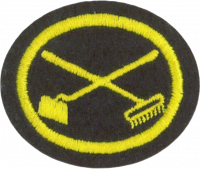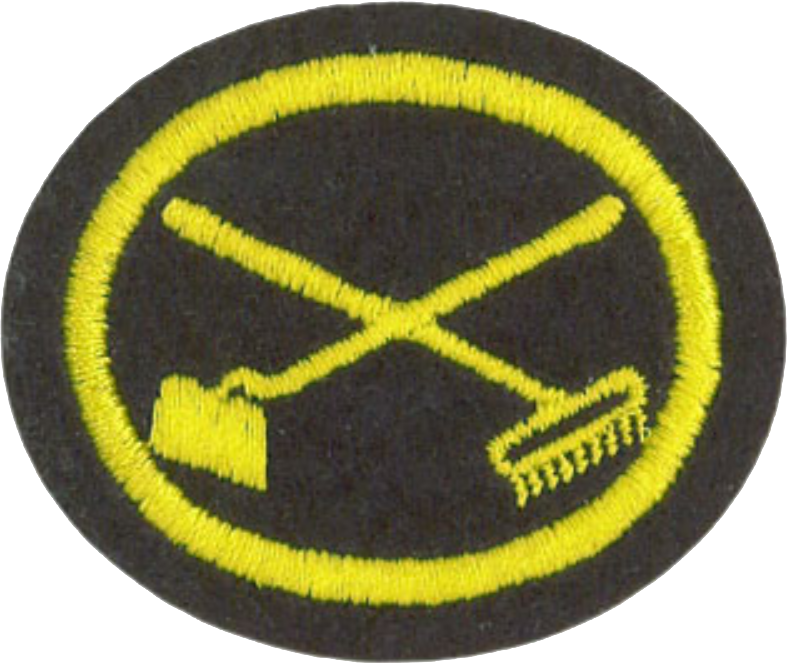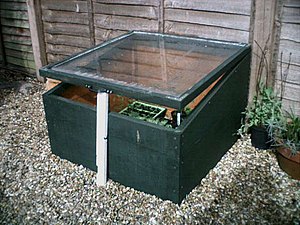Difference between revisions of "AY Honors/Gardening/Answer Key 2/es"
(Created page with "Especialidades JA/Jardinería/Respuestas") |
|||
| (36 intermediate revisions by 2 users not shown) | |||
| Line 1: | Line 1: | ||
| − | + | {{HonorSubpage}} | |
| − | + | {{#vardefine:reqpage|{{#titleparts:{{PAGENAME}}|2}}/Requirements 2}} | |
| − | |||
| − | {{ | ||
| − | |||
| − | |||
| − | |||
| − | |||
| − | |||
| − | |||
| − | |||
| − | }} | ||
| − | {{ | ||
| − | |||
| − | |||
| − | |||
| − | |||
| − | |||
| − | |||
<section begin="Body" /> | <section begin="Body" /> | ||
| − | {{ansreq|page={{# | + | {{ansreq|page={{#var:reqpage}}|num=1}} |
<noinclude></noinclude> | <noinclude></noinclude> | ||
| − | <!-- | + | <!-- 1. Preparar la tierra, fertilizar y sembrar una huerta de no menos de 100 pies cuadrados (9 metros cuadrados). Cultivar al menos seis diferentes vegetales y hortalizas, tres a partir de semillas y tres de las plantas de las cuales haya tomado las semillas directamente a través de la cosecha. --> |
| − | + | {{clear}} | |
| − | |||
| − | + | {{clear}} | |
| − | + | {{clear}} | |
| − | |||
| − | + | {{clear}} | |
| − | |||
| − | + | {{clear}} | |
| − | + | {{clear}} | |
| − | + | {{clear}} | |
| − | + | {{clear}} | |
| − | |||
| − | |||
| − | |||
| − | |||
| − | |||
| − | |||
| − | |||
| − | |||
| − | |||
| − | |||
| − | |||
| − | |||
| − | |||
<noinclude></noinclude> | <noinclude></noinclude> | ||
{{CloseReq}} <!-- 1 --> | {{CloseReq}} <!-- 1 --> | ||
| − | {{ansreq|page={{# | + | {{ansreq|page={{#var:reqpage}}|num=2}} |
<noinclude></noinclude> | <noinclude></noinclude> | ||
| − | <!-- 2. | + | <!-- 2. Hacer una lista de formas de control de insectos y/o enfermedades en su jardín. Saber cuándo y cómo aplicar los insecticidas y fungicidas. --> |
| − | |||
| − | |||
| − | + | {{clear}} | |
| − | + | {{clear}} | |
| − | + | {{clear}} | |
| − | + | {{clear}} | |
| − | + | {{clear}} | |
| − | + | {{clear}} | |
<noinclude></noinclude> | <noinclude></noinclude> | ||
{{CloseReq}} <!-- 2 --> | {{CloseReq}} <!-- 2 --> | ||
| − | {{ansreq|page={{# | + | {{ansreq|page={{#var:reqpage}}|num=3}} |
<noinclude></noinclude> | <noinclude></noinclude> | ||
| − | <!-- 3. | + | <!-- 3. ¿Qué es el mantillo acolchado? ¿Cómo y por qué se utiliza en el jardín? --> |
| − | |||
<noinclude></noinclude> | <noinclude></noinclude> | ||
{{CloseReq}} <!-- 3 --> | {{CloseReq}} <!-- 3 --> | ||
| − | {{ansreq|page={{# | + | {{ansreq|page={{#var:reqpage}}|num=4}} |
<noinclude></noinclude> | <noinclude></noinclude> | ||
| − | <!-- 4. | + | <!-- 4. ¿Qué es la rusticidad? ¿Qué hortalizas se consideran rústicas en su área? --> |
| − | |||
| − | + | {{clear}} | |
| − | |||
| − | |||
<noinclude></noinclude> | <noinclude></noinclude> | ||
{{CloseReq}} <!-- 4 --> | {{CloseReq}} <!-- 4 --> | ||
| − | {{ansreq|page={{# | + | {{ansreq|page={{#var:reqpage}}|num=5}} |
<noinclude></noinclude> | <noinclude></noinclude> | ||
| − | <!-- 5. | + | <!-- 5. Realizar una de las siguientes actividades: --> |
<noinclude></noinclude> | <noinclude></noinclude> | ||
| − | {{ansreq|page={{# | + | {{ansreq|page={{#var:reqpage}}|num=5a}} |
<noinclude></noinclude> | <noinclude></noinclude> | ||
| − | |||
| − | {{: | + | {{:AY Honors/Germination testing/es}} |
<noinclude></noinclude> | <noinclude></noinclude> | ||
{{CloseReq}} <!-- 5a --> | {{CloseReq}} <!-- 5a --> | ||
| − | {{ansreq|page={{# | + | {{ansreq|page={{#var:reqpage}}|num=5b}} <!--T:23--> |
<noinclude></noinclude> | <noinclude></noinclude> | ||
| − | {{: | + | {{:AY Honors/Hotbed cold frame/es}} |
<noinclude></noinclude> | <noinclude></noinclude> | ||
{{CloseReq}} <!-- 5b --> | {{CloseReq}} <!-- 5b --> | ||
| − | {{ansreq|page={{# | + | {{ansreq|page={{#var:reqpage}}|num=5c}} <!--T:24--> |
<noinclude></noinclude> | <noinclude></noinclude> | ||
| − | |||
| − | |||
| − | |||
| − | |||
| − | |||
| − | |||
| − | |||
<noinclude></noinclude> | <noinclude></noinclude> | ||
{{CloseReq}} <!-- 5c --> | {{CloseReq}} <!-- 5c --> | ||
| − | {{ansreq|page={{# | + | {{ansreq|page={{#var:reqpage}}|num=5d}} <!--T:25--> |
<noinclude></noinclude> | <noinclude></noinclude> | ||
| − | |||
| − | |||
<noinclude></noinclude> | <noinclude></noinclude> | ||
| Line 135: | Line 86: | ||
{{CloseReq}} <!-- 5 --> | {{CloseReq}} <!-- 5 --> | ||
<noinclude></noinclude> | <noinclude></noinclude> | ||
| − | == | + | ==Referencias== |
| − | |||
| − | |||
| − | |||
<noinclude></noinclude> | <noinclude></noinclude> | ||
| − | + | {{CloseHonorPage}} | |
Latest revision as of 14:10, 7 October 2021
Nivel de destreza
1
Año
1928
Version
26.11.2024
Autoridad de aprobación
División Norteamericana
1
2
3
4
5
5a
El propósito de una prueba es determinar el porcentaje de semillas en un lote determinado que germinarán con éxito. Esta información se puede usar para calcular las tasas de siembra.
Una forma simple de tener una idea de la germinación del campo real antes de sembrar es realizar una prueba. Esto consiste en un tubo enrollado de papel humedecido que contiene las semillas que se analizarán para la germinación, se coloca en una bolsa de plástico y se almacena en un lugar cálido durante varios días. Las plántulas se cuentan a medida que germinan y se quitan, dando el porcentaje de germinación real.
Para realizar una prueba, humedezca una toalla de mano de papel marrón y exprima todo el exceso de agua que sea posible. No use una toalla de papel «blanda» como se encuentra típicamente en una cocina casera: las semillas pueden enviar raíces a través de esto, lo que complica el recuento. El exceso de agua en la toalla cortará el oxígeno y arruinará la prueba.
Extienda la toalla de papel sobre una superficie plana, cuente 100 semillas y colóquelas en una línea (en diagonal funciona mejor) sobre la toalla. Enrolle la toalla y colóquela en una bolsa de plástico. Selle la bolsa y colóquela en un lugar cálido, como en la parte superior de un refrigerador. Una temperatura de 30° C es ideal.
Después de cuatro días, retire la toalla de la bolsa de plástico, desenróllela, y cuente y quite las semillas que hayan germinado. Vuelva a enrollar la toalla, vuelva a colocarla en la bolsa de plástico, vuelva a sellarla y vuelva a colocarla en la parte superior del refrigerador.
Después de tres o cuatro días más, repita el conteo. El número total de semillas de ambos conteos igualará la tasa de germinación, suponiendo que se usaron 100 semillas. Si se usó un número diferente de semillas, puede calcular la tasa de germinación de la siguiente manera:
[math]\displaystyle{ Germinación\ Tasa = \frac{Semillas\ germinadas}{Semillas\ germinadas + Semillas\ no germinadas} \times 100 }[/math]
5b
Hotbed (Semillero con calor)
Un semillero con calor es una pila de materia orgánica en descomposición más caliente que su entorno debido al calor que desprende el metabolismo de los microorganismos en la pila en descomposición. Los semilleros se utilizan para compostar y mantener calientes las plantas delicadas durante el invierno.
Cold Frame (cubierto con vidrio)
En agricultura y jardinería, un semillero cubierto con vidrio es un recinto con techo transparente, construido cerca del suelo, que se utiliza para proteger las plantas del clima frío. La parte superior transparente admite la luz del sol y se basa en el efecto invernadero para reflejar el calor radiante que de otro modo se escaparía por la noche. Esencialmente, un semillero cubierto con vidrio funciona como un dispositivo de extensión de temporada de invernadero en miniatura.
Los semilleros cubiertos con vidrio se encuentran en los huertos familiares y en el cultivo de hortalizas. Crean microclimas que proporcionan varios grados de aislamiento de la temperatura del aire y del suelo y se protegen del viento. En las regiones de invierno frío, estas características permiten que las plantas se inicien antes en la primavera y sobrevivan más tiempo en el otoño y el invierno. Se utilizan con mayor frecuencia para cultivar plántulas que luego se trasplantan a campo abierto, y también pueden ser un hogar permanente para vegetales resistentes al frío que se cultivan para la cosecha de otoño e invierno.
La construcción del semillero cubierto con vidrio es un proyecto común de construcción de viviendas o granjas, aunque se encuentran disponibles kits y sistemas comerciales. Un plan tradicional utiliza ventanas de vidrio antiguas: se construye un marco de madera de 30-60 cm y la ventana se coloca en la parte superior. El techo a menudo está inclinado hacia el sol de invierno para capturar más luz y mejorar el escurrimiento de agua, y tiene bisagras para facilitar el acceso. Se puede usar plástico transparente, rígido o laminado en lugar del vidrio. Un cable calefactor eléctrico, disponible para este propósito, se puede colocar en el suelo para proporcionar calor adicional.
5c
5d



